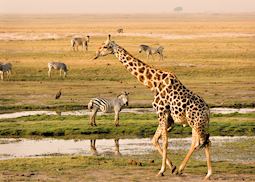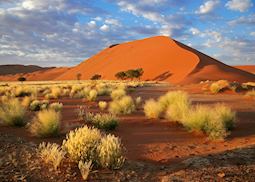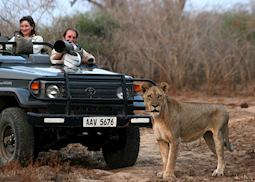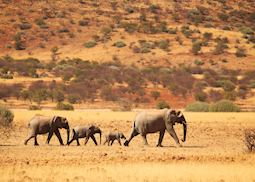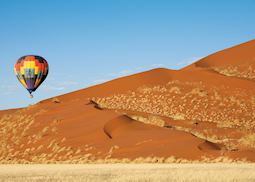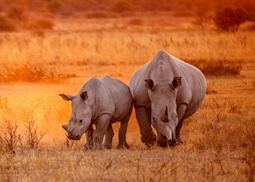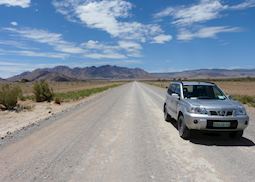
Self-driving in Namibia
Self-driving in Namibia
With very little traffic on well-maintained roads that wind through spectacular scenery, as well as plenty of big-game wildlife to see, Namibia is an ideal destination for a self-drive safari.
Home to the world’s oldest desert, its highest dunes, and second largest canyon, Namibia’s scenery is vast and dramatic. You can watch seal colonies on the Skeleton Coast and trek out to meet black rhino on Damaraland’s vast plains. The country is ready to be explored in innovative ways — from self-drives to hot air balloon rides — and can cater for those in search of a little luxury as well as those seeking a particularly active holiday.
Whether planning your honeymoon or a safari with your family, our Namibia travel guides are designed to help you make informed choices about your trip.
Our travel guides share our specialists' passion and knowledge for Namibia. We travel here regularly to discover new experiences, explore untried areas and dig deeper into the better-known places and attractions. At the same time, we gather advice and up-to-date information on the best-quality guides, new hotels and restaurants, and the most memorable forms of transportation.
Self-driving in Namibia
With very little traffic on well-maintained roads that wind through spectacular scenery, as well as plenty of big-game wildlife to see, Namibia is an ideal destination for a self-drive safari.
Namibia safaris
Namibia may not immediately spring to mind when you think of a safari, but with four of the Big Five roaming Etosha National Park and the chance to see desert-adapted elephant in Damaraland, it makes a rewarding safari destination, as Africa specialist Alex explains.
Family holidays in Namibia
A family holiday in Namibia can include kayaking with seals, stargazing in the desert, tracking cheetah and heading out on safari to see desert-adapted elephant. Africa specialist Iain discusses his ideas for a trip that appeals to all ages.
What to do in Namibia: our highlights guide
Home to the world’s tallest sand dunes, a wild Atlantic coastline and colonial cities, Namibia is delightfully different to other African countries. Namibia specialist, Steve, details some of the key things to see and do during your time in the country.
A typical day on an African safari
A typical day on safari essentially revolves around the need to see the wildlife at its most active. It usually follows a similar routine with slight variations between destinations and seasons.
Luxury Namibia safaris
Flying over the Skeleton Coast, tracking rare leopard in the highlands, or sleeping under the stars at an opulent tented camp. Namibia specialist Laura outlines the best camps and experiences for a luxury safari.
Activity holidays in Namibia
A land of vast landscapes and wild seas there are plenty of activities for you to build into your tailor-made trip to Namibia. Quad-biking, hiking and kayaking are all popular activities, and with its exceptional wildlife, game-drives and balloon trips are equally rewarding.
Honeymoons in Namibia
Namibia often flies under the radar for honeymooners, but it’s the ideal destination for secluded desert safaris, romantic starry-night sleepouts, and a generous dose of adventure. Africa specialist Robin shares his top recommendations for honeymoons in Namibia.
